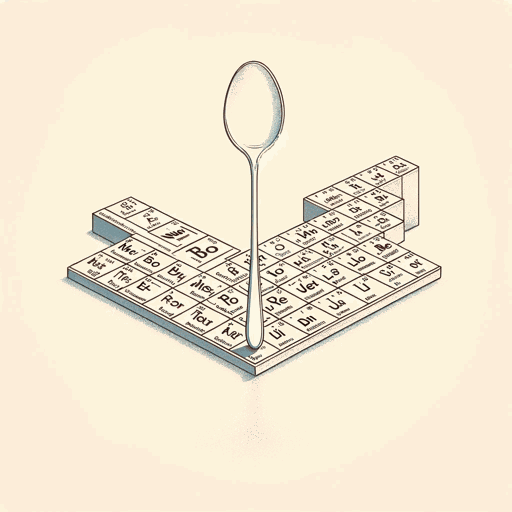93 pages • 3 hours read
Sam KeanThe Disappearing Spoon: And Other True Tales of Madness, Love, and the History of the World from the Periodic Table
Nonfiction | Book | Adult | Published in 2010A modern alternative to SparkNotes and CliffsNotes, SuperSummary offers high-quality Study Guides with detailed chapter summaries and analysis of major themes, characters, and more. For select classroom titles, we also provide Teaching Guides with discussion and quiz questions to prompt student engagement.
Introduction-Part 1Chapter Summaries & Analyses
Part 1: “Orientation: Column by Column, Row by Row”
Introduction Summary
Author Sam Kean recalls breaking a thermometer as a child. His mother corrals the spilled mercury droplets, pushing them together with a toothpick until they form one shimmery liquid ball, then deposits the ball into an old pill bottle. Kean has taken an interest in mercury, and all the elements, ever since.
Kean learns that the Lewis and Clark Expedition carried mercury pills to treat constipation. Today, archaeologists can locate many of the Expedition’s campsites: “mercury deposits dot the soil many places where the gang dug a latrine” (5). The mercury pills came from Dr. Benjamin Rush, a signer of the Declaration of Independence and doctor during the 1793 Philadelphia yellow fever epidemic, where his mercury treatments “no doubt poisoned or outright killed swaths of people whom yellow fever might have spared” (5).
Kean learns in science class that “the symbol for mercury, Hg, consists of two letters that don’t even appear in its name” but instead derive from the Latin hydragyrum, “water silver” (6). He discovers that the Mad Hatter of Alice in Wonderland probably had been poisoned from his use of mercury in the hat-making process. He also realizes that Dr. Rush’s mercury laxatives worked because “the body will rid itself of any poison, mercury included” (6).

